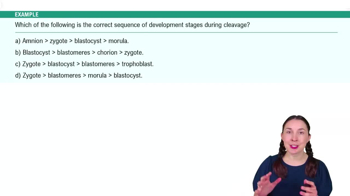Multiple Choice
Which of the following occurs if implantation is successful during early human development?
56
views
 Verified step by step guidance
Verified step by step guidance Verified video answer for a similar problem:
Verified video answer for a similar problem:



 4:48m
4:48mMaster Introduction to Human Development with a bite sized video explanation from Bruce Bryan
Start learning